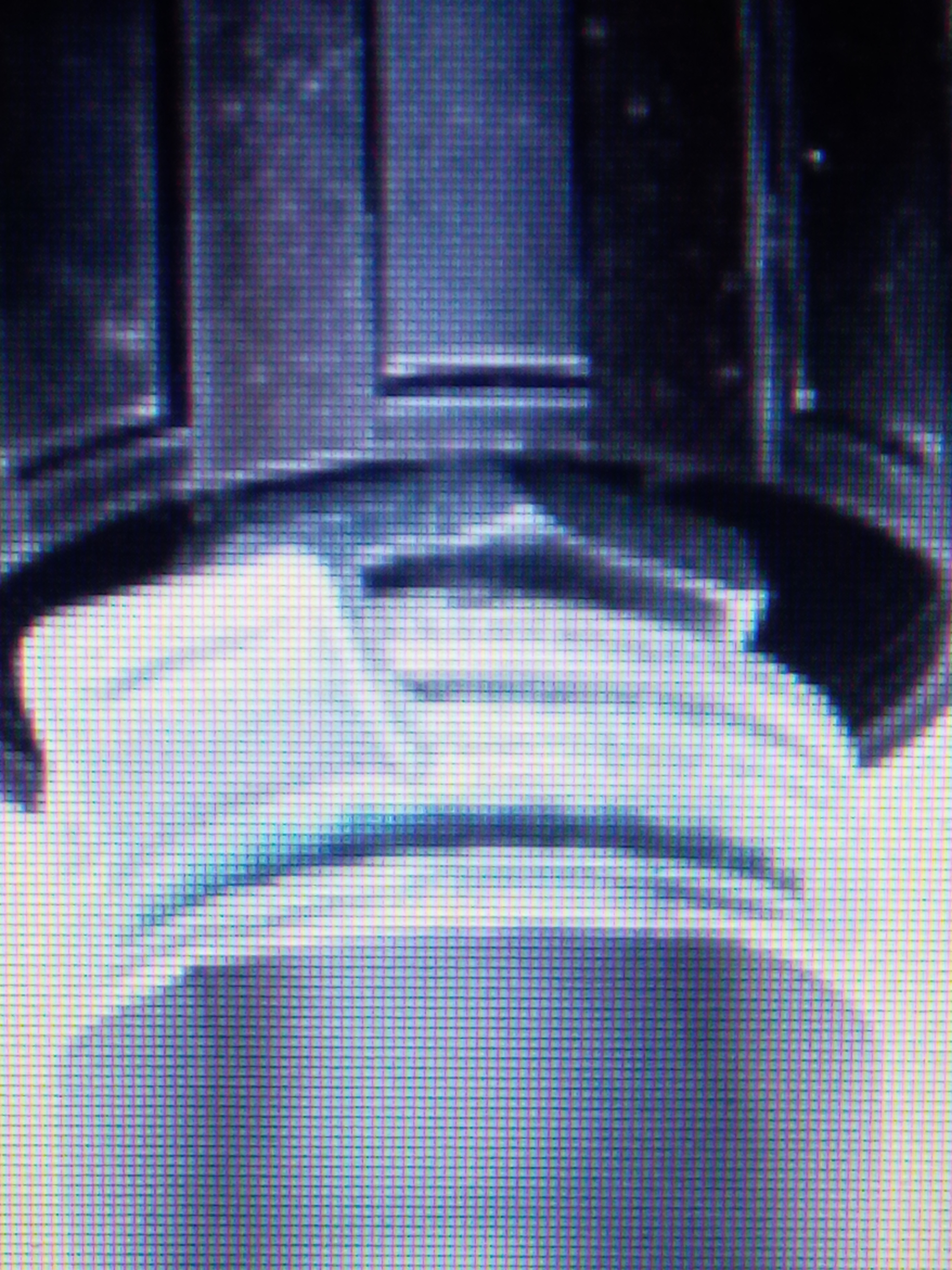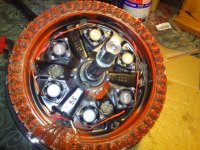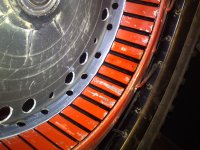The Toecutter
100 kW
- Joined
- Feb 8, 2015
- Messages
- 1,315
I attempted to install the rear 7 speed cassette onto my Leafbike motor today and ran into a few problems.
The cassette is a SunRace 11-34T 7 speed. The outer cogs, gears 6 and 7, 13T and 11T in size respectively, come apart and the first 5 gears are riveted together. When I place them onto the Leafbike motor's freehub body, the first 6 gears want to slide back and forth on the freehub body while gear 7 has a lip that prevents it from going inward toward the hub all the way against the other gears. This leaves a massive gap between 6th and 7th gear. The lockring tightens down, but gears 1-6 can still slide freely.
So a friend and I made a spacer out of some metal pipe with a 34mm inner diameter hole and a sidewall thickness of about 3mm. We kept having to shave more and more off to make it fit. I had to use a flathead to pry the one of the dropouts against the motor axle to fit the motor into the dropouts, requiring an additional 0.5-1mm of clearance that the dropouts didn't otherwise have.
Now it is at a point where it has no play when I tighten the lockring down. BUT, pedaling forward OR backpedaling now takes significant effort and there is an intermittent high-pitched rubbing noise. The cassette does not spin freely by hand in either direction, nor do the pedals. I only averaged 8.6 mph on the ride home because of the friction involved when rotating the pedals(I normally average about 18-23 mph on that route without any motor at all), even though the trike coasted downhill quite effortlessly, peaking at over 30 mph without any pedal input.
I suspect the lockring is rubbing up against the inside of the dropout area on the frame when I try to rotate the pedals. I also suspect that even though the lockring locked the cassette in place, it may not be threaded in all the way. Which means I need for the spacer to be slightly more narrow, by about 0.5-1mm. But given the machinery used to make the spacer, it is not really feasible to shave it down anymore while keeping the spacer straight and aligned, and de-burring it already took over an hour.
So for those of you with a cassette version of this motor, what type and size of spacers did you use on the freehub body between the motor case and the cassette? I need to correct this issue before I can proceed with the remainder of the conversion. I'm hoping to get it rideable on a regular basis sometime this week.
The cassette is a SunRace 11-34T 7 speed. The outer cogs, gears 6 and 7, 13T and 11T in size respectively, come apart and the first 5 gears are riveted together. When I place them onto the Leafbike motor's freehub body, the first 6 gears want to slide back and forth on the freehub body while gear 7 has a lip that prevents it from going inward toward the hub all the way against the other gears. This leaves a massive gap between 6th and 7th gear. The lockring tightens down, but gears 1-6 can still slide freely.
So a friend and I made a spacer out of some metal pipe with a 34mm inner diameter hole and a sidewall thickness of about 3mm. We kept having to shave more and more off to make it fit. I had to use a flathead to pry the one of the dropouts against the motor axle to fit the motor into the dropouts, requiring an additional 0.5-1mm of clearance that the dropouts didn't otherwise have.
Now it is at a point where it has no play when I tighten the lockring down. BUT, pedaling forward OR backpedaling now takes significant effort and there is an intermittent high-pitched rubbing noise. The cassette does not spin freely by hand in either direction, nor do the pedals. I only averaged 8.6 mph on the ride home because of the friction involved when rotating the pedals(I normally average about 18-23 mph on that route without any motor at all), even though the trike coasted downhill quite effortlessly, peaking at over 30 mph without any pedal input.
I suspect the lockring is rubbing up against the inside of the dropout area on the frame when I try to rotate the pedals. I also suspect that even though the lockring locked the cassette in place, it may not be threaded in all the way. Which means I need for the spacer to be slightly more narrow, by about 0.5-1mm. But given the machinery used to make the spacer, it is not really feasible to shave it down anymore while keeping the spacer straight and aligned, and de-burring it already took over an hour.
So for those of you with a cassette version of this motor, what type and size of spacers did you use on the freehub body between the motor case and the cassette? I need to correct this issue before I can proceed with the remainder of the conversion. I'm hoping to get it rideable on a regular basis sometime this week.




